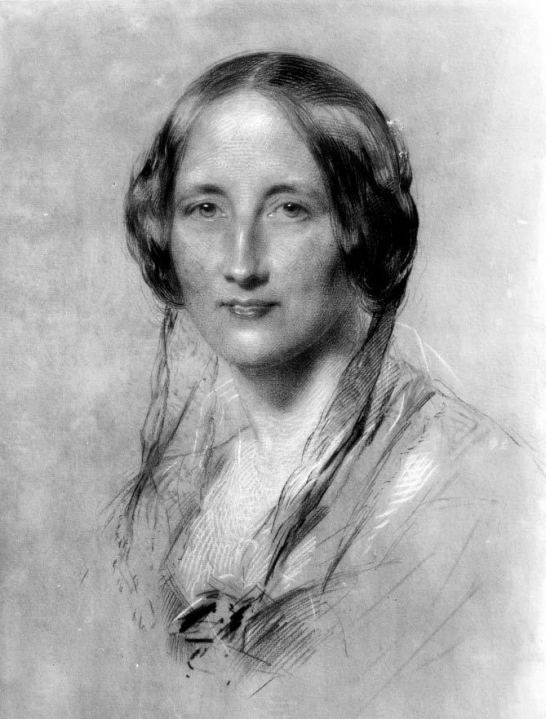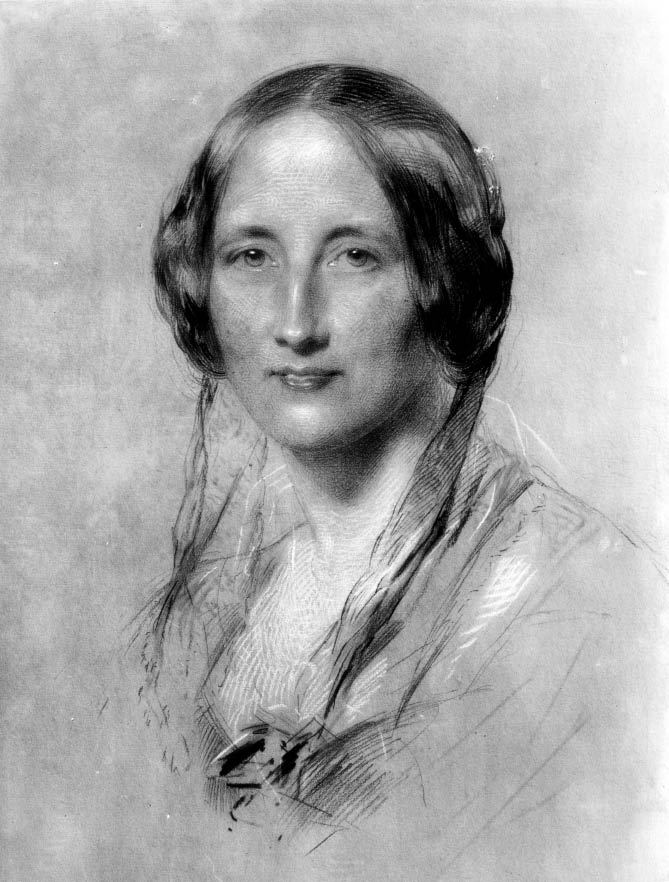On the southern edge of Manchester, a few miles from the airport, there is a commuter town where the Victorian novel remains very much alive. This year Knutsford celebrates the bicentenary of its most famous daughter, who immortalised this ‘dear little town’ in several of her finest stories. More than 150 years after it first appeared, in weekly instalments in Dickens’s Household Words, Cranford remains Mrs Gaskell’s most enduring creation. And in these streets you can still trace the outline of the world that she created.
Elizabeth Gaskell was born in 1810, in Chelsea, the daughter of a Unitarian minister. Her mother died when she was a few months old, and Elizabeth was packed off to an aunt in Knutsford. She grew up in a house where men were conspicuous by their absence, and this genteel matriarchy found a lasting voice in Cranford, the novel that she based on the prim spinsters who shaped her character. As she said, ‘The ladies of Cranford are quite sufficient. A man, as one of them once observed to me, is so in the way in the house.’
The town of Cranford revolves around these proud, independent women, whom Gaskell called her Amazons. Knutsford’s bicentenary reflects the feminine focus of her writing. If only she were here today, to describe the current scene. It feels like stepping into one of her novels. When I arrived, the town was in mourning for the leader of Knutsford’s modern Amazons, who died last week, the day after Gaskell’s birthday. For a quarter of a century, local teacher Joan Leach worked tirelessly to promote Gaskell’s lifelong love affair with Knutsford. This bicentenary was her finale. Too ill to attend the unveiling of the new Gaskell window in Westminster Abbey, Joan’s last outing was to Knutsford’s Unitarian Chapel, where Gaskell is buried, for a service to mark the 200th anniversary of the author’s birth. Joan died the next day, of cancer, at Tabley Hall, now a nursing home, where Gaskell set one of her Cranford stories. Leach’s death, in the midst of these celebrations, feels like a scene straight out of Cranford. Her ashes will be scattered close to Gaskell’s grave.
One of Leach’s colleagues from Knutsford Heritage Centre, Val Dawson, made time to show me round the town. Dawson lives in a quaint old cottage on the high street, already a familiar landmark in Gaskell’s day. With her mature good looks and timeless good manners, it’s easy to picture her as one of Cranford’s Amazons. She even shares her surname with one of them. All that’s missing is the bonnet.
We start our tour outside Gaskell’s childhood home, overlooking Knutsford Heath. This Georgian house is handsome, but there’s nothing ostentatious about it. Gaskell’s generation were careful to conceal their wealth (‘elegant economy’ was their watchword) so it’s ironic that Knutsford has recently become renowned for more conspicuous consumption, driven by the Wives and Girlfriends (aka Wags) of Mancunian football players. Gaskell would have had such fun satirising this sudden influx of new money. For what are these rich footballers but the brash mill owners of our own age?
The ladies I meet here are anxious to explain that Knutsford lies just outside the Wags’ main stomping ground, the so-called Golden Triangle of Wilmslow, Prestbury and Alderley Edge. True, Mr and Mrs Beckham used to dine at Belle Epoque, Knutsford’s lovely art-nouveau restaurant, but as an escape from the spotlight rather than a way to wallow in it. Yet there’s no denying Knutsford is remarkably well heeled, full of smart shops the like of which you rarely see outside London. There’s a Bentley showroom on the edge of town, and numerous chic boutiques on the high street. So how has Knutsford escaped the recession? ‘Heaven knows!’ says Dawson. ‘It must be these footballers and their high salaries!’ If so, it’s a good advert for trickle-down economics. It’s a weekday afternoon, yet the local wine bar is doing a brisk trade. ‘Parties in Cranford were solemn festivities,’ wrote Mrs Gaskell. Not any more.
Across the road from this swish wine bar is the church where Elizabeth married William Gaskell, a Unitarian minister like her father. After her wedding she moved to Manchester, but she took a piece of Knutsford with her, and when her husband encouraged her to write, after the death of her only son, she returned here in her fiction. Knutsford is full of sites that feature in her stories, like the General Stores (now a Chinese restaurant) where Miss Matty Jenkyns learns that the bank that holds her life savings has failed. A few years ago this scene was merely history. Today it seems terribly topical again.
As you walk around Knutsford, Gaskell’s Cranford still feels incredibly current. The layout of the town is just the same, right down to the narrow pavements (built to prevent young ladies from walking arm-in-arm). Today’s residents are no longer ‘all abed and asleep by ten’, but there’s still the same sense that, as in Cranford, ‘it was impossible to live a month here and not know the daily habits of each resident’. These modern Amazons may travel in four-by-fours rather than by horse and trap or sedan chair, but they still spend their mornings ‘rambling from shop to shop’, as Gaskell put it, ‘to collect all the stray pieces of intelligence in the town’. Then, as now, the town’s cultural life was driven by well-groomed women of a certain age. ‘We’re not all Wags,’ says Dawson, with a grin, as we say goodbye.
That evening I head for Knutsford Little Theatre for an evening of Victorian songs and sketches performed by the local amateur operatic society. Of course, a hard-hearted critic could easily pick this homely show to pieces, but there’s more warmth in this performance than in countless West End musicals I’ve seen.
Next morning, I travel to Tatton Park (Hanbury Court in Gaskell’s Cranford) for a lecture about Gaskell’s Cheshire, amid the priceless Canalettos of this grand, historic stately home. On a weekday morning in October I’d expected a sparse turnout, but virtually every seat is taken. This lecture should have been given by Joan Leach. Her colleague Marie Moss gives it in her absence. Moss says she doesn’t know half as much as Joan, but in the end she does her proud. Like Gaskell’s heroines, these Knutsford Amazons know how to rally round. Afterwards, we nose around the house, where Gaskell set various scenes from Wives & Daughters, her final, unfinished masterpiece. Wandering these endless corridors, you’re reminded of the vast divisions in Gaskell’s world between rich and poor.
After lunch in the old stables, Tatton’s head gardener, Sam Youd, walks me round the gardens where he’s worked for 30 years. He shows me the huge cedar beneath which Mrs Gaskell used to sit and write, or so the locals say. In her day, he tells me, gardeners started work here at the age of 12. On their first day, they’d plant an oak tree. When they died, that oak would be cut down to make their coffin. It sounds like another scene from Cranford. I wonder if Joan Leach would have liked it. It’s a shame I never met her. Maybe this Gaskell anniversary will also become her monument. Since Mrs Gaskell created Cranford, the wider world has changed beyond all recognition, but here in Knutsford her friendly ghost feels very close at hand.
For more information about Knutsford’s Elizabeth Gaskell Bicentenary, visit www.elizabethgaskell.co.uk







Comments